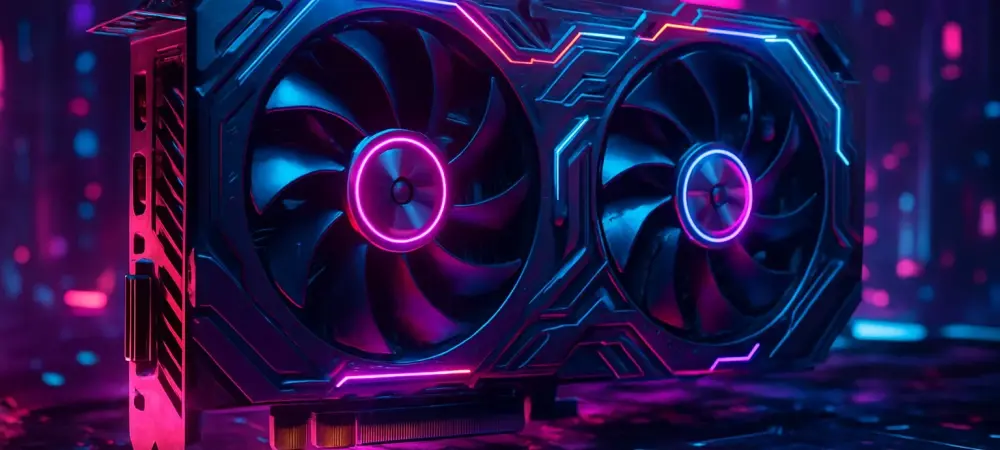Amidst the swiftly evolving domain of artificial intelligence and high-performance computing, navigating an ever-expanding universe of technology can pose challenges for professionals seeking optimal hardware solutions. As AI applications burgeon and computational demands escalate, IT professionals and practitioners confront the imperative of identifying graphics processing units (GPUs) that balance power, efficiency, and specificity for AI workloads. This review meticulously examines whether AMD’s innovative Radeon AI PRO R9700 is the judicious investment for such endeavors.
Unveiling the Radeon AI PRO R9700
Rooted in the advanced RDNA 4 architecture, the Radeon AI PRO R9700 represents a formidable leap forward in accelerating AI tasks. It features the Navi 48 GPU, boasting 64 compute units and 4,096 stream processors, establishing a solid foundation for increased AI capabilities. Among its standout specifications are the inclusion of 128 AI accelerators and a commendable thermal design power (TDP) of 300 watts. This GPU integrates 32 GB of GDDR6 memory on a 256-bit bus, offering double the VRAM when contrasted with the preceding 9070 XT, thereby enabling proficient handling of intricate AI workloads and models.
Prominent in AMD’s narrative is the commitment to enhancing AI-performance faculties. The R9700 promises a staggering 4-fold increase in AI teraflops per second (TOPS) and a 2-fold elevation in overall AI performance. Such advancements are transparent in benchmark results illustrating the R9700’s twin-speed advantage over its predecessor, the Radeon PRO W7800, while also charting superior ground against competitors like the RTX 5080. With its large VRAM catering to memory-intensive models, AMD establishes the R9700 not merely as an enhancement, but a pivotal shift toward advanced machine learning and AI operations.
The Radeon AI PRO R9700: Evaluating Performance
When scrutinizing performance metrics, the R9700 demonstrates substantial prowess. Benchmarked tests underscore its proficiency, with the unit achieving 47.8 TFLOPs in FP32. Incorporating innovative features such as Wave Matrix Multiply Accumulate (WMMA) and Structured Sparsity positions the R9700 as a vital resource for precision-demanding AI models. A comparison with its predecessors, particularly in scenarios like real-time inference for AI models, highlights tangible progress. This GPU also outpaces competitors like the RTX 5080, achieving up to 5x faster processing speeds for memory-heavy tasks, showcasing its pivotal role in real-world applications without compromising precision or speed.
AMD’s strategic foresight extends to scalability via integrated 4-way Multi-GPU setups, amalgamating a VRAM pool of 128 GB, suitable for models like Mistral 123B. By recognizing the spectrum of AI applications, from small-medium LLMs guided by Ryzen AI MAX APUs to substantial inference utilizing Instinct AI accelerators, AMD advances toward multifaceted AI deployment scenarios. Ultimately, the Radeon AI PRO R9700 is emblematic of a comprehensive stride in bolstering scalability, performance, and precision—a crucial fit for current and future AI applications.
Advantages and Disadvantages: Weighing the Options
Diverse benefits accompany the Radeon AI PRO R9700, including its significant VRAM capacity and the marked boost in AI performance metrics. Its design and capability ensure it excels in facilitating detailed AI computations and modeling tasks. Yet, this robust capacity demands noteworthy power consumption, albeit balanced with its performance edge in memory-intensive operations. Niche applicability stands as both strength and limitation; focused on specific AI tasks, the GPU might not suit broader, general-purpose usage where demands differ substantially.
The nuanced evaluation elucidates where the R9700 shines and the circumstances where it may confront challenges. For scenarios concentrated on advanced AI models and high-density mathematical operations, it is highly suitable. However, broader market applications might anticipate trade-offs in power usage and scalability requirements. AMD crafts a product fine-tuned for targeted professional execution in response to the burgeoning demands of precision-focused AI processes.
Final Assessment and Recommendation
The evaluation of the Radeon AI PRO R9700 underscores a commitment to performance and precision characteristics that are top-tier. In terms of market positioning, the R9700 seamlessly aligns with technological strides emphasizing scalability, efficiency, and AI-centric workflows. Prospective users, particularly those entrenched in dense modeling and high-demand computational fields, stand to gain substantial benefits from investing in such advanced technology.
Nonetheless, potential buyers should weigh the inherent features against their particular use cases, scrutinizing whether consumption, niche applications, or expenditure align with their operational imperatives. AMD’s focus on tactical innovation emerges as a decisive maneuver amid the rigorous landscape of AI-focused GPU technologies. Conclusively, the R9700 proves to be a prudent choice for individuals and enterprises prioritizing performance and unique technological applications.
By addressing the diverse spectrums of AI and ensuing computational requirements, AMD also crafts a narrative where technology is not solely about advancements but catering to distinct end-user environments. As future demands for sophisticated AI models surge, strategic investment in the Radeon AI PRO R9700 may position users advantageously in an ecosystem poised for revolutionary transformations, ensuring ongoing adaptability and performance enhancement.

